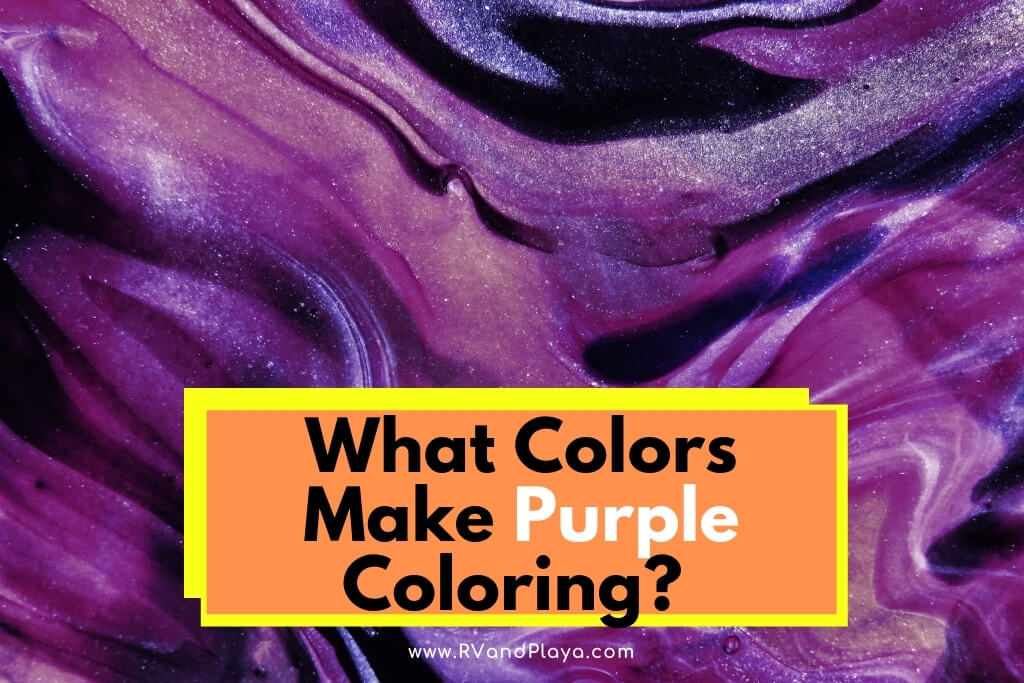How to make purple with food coloring? When cooking with food coloring, it’s essential to know how to make accurate color combinations so that you get the desired results.
One common color people like to make with food coloring is purple, but you first need to know which other colors to mix to achieve this outcome.
So, what colors make purple food coloring? In order to get purple food coloring, you first need to acquire some red food coloring and blue food coloring. Then, you can make a mixture of your desired proportions to get the purple color that you want.
Read on to learn more about how to achieve different types of purple food coloring with reds and blues.
Table of Contents
What Colors Make Up the Basis of Purple?
In order to understand how to achieve a great purple food coloring, we need to first look at the colors that create purple in the first place. Further, we need to see where they all sit on the color wheel.
Read also: What Do You Get When You Mix Red And Purple? (Best Tips)
Primary and Secondary Colors
You may have heard of primary, secondary, and tertiary colors in art class or another creative setting. These colors are the main hues that make up the basic color wheel we know around the world.
There are three primary colors – red, yellow, and blue – and they make up the main three hues on the color wheel. Other colors derive from mixtures of these three colors.
Then, there are secondary colors – orange (mixture of red and yellow), green (mixture of blue and yellow), and purple (mixture of red and blue).
As you can see, the mixture of primary colors blue and red is where we will get our purple color, and thus the purple food coloring.
Read also: What Colors Make Lavender with Food Coloring? (How To – For Beginners)
How to Get Purple Food Coloring
So, the answer is pretty obvious at this point – we need a mixture of blue and red food coloring to achieve purple food coloring.
The question remains, though: what type of mixture of red and blue do we need? Below, we’ll explore how red and blue mix to make purple food coloring.
How to Make the Color Purple for Cake Decorating >> Check out the video below:
Things That Affect the Color of Food Coloring
What Are You Adding the Food Coloring To?
One thing that will affect the final color of your purple food coloring is the substance you are adding it to. For example, if you’re adding your food coloring to white icing, then you have a good basis for adding a mixture of red and blue to get a purple result.
Having a white base like icing also lets you know that you may need a higher ratio of food coloring to icing in order to achieve a richer color since the white will dull your food coloring drops.
On the other hand, though, if you were adding food coloring to a yellow cupcake, then your final purple may get skewed if you add simply blue and red drops.
This is because yellow is another primary color, similar to blue and red.
Adding blue to yellow often gets you a secondary green color, and adding red to yellow often gets you a secondary orange color.
How Much Dye Are You Using?
Also, you’ll want to consider how much food coloring you use to achieve purple food coloring. You typically won’t need very many drops of food coloring since it’s so concentrated.
However, the ratio of red to blue drops will affect how bright, dark, or deep the purple outcome is.
In general, you should know that with most basic food coloring products, purple is only achieved when your proportion of red is much greater than your proportion of blue.
Ratio for a Basic Purple Color
For example, You can achieve a basic purple by mixing a blue: red ratio of about 3:16. This means that for every three drops of blue, you need to mix in about 16 drops of red.
How many drops of food coloring to make purple? To make basic purple, you need to add in on average 15 drops of blue food coloring with 80 drops of red food coloring
Ratio for a Dark Purple Color
Or, if you want to achieve a dark purple color, you need a blue: red ratio of 3:13. This means that for every three drops of blue, you need to mix in about 13 drops of red.
As you’ll notice, it takes a smaller amount of red in the mixture to achieve a darker purple color. This means that blue is the source of the deeper color.
Ratio for Light Purple Colors
And, if you want to get a light purple color, such as lilac or lavender, you’ll need to adjust your red: blue ratios to incorporate more white.
You can do this by either using less food coloring compared to your base (like frosting or icing), or you can do it by using a light blue food coloring or pink (type of red) in your food coloring mixture.
HOW TO MAKE COLOR VIOLET ON ICING – Frosting >> Check out the video below:
Using Natural Food Coloring to Achieve Purple
You can also achieve purple food coloring with natural dyes, but you may not necessarily need both red and blue to get there.
Cabbage
For example, if you use purple cabbage to naturally color your food, your coloring will automatically be a shade of purple. You can acquire coloring from the cabbage by boiling it in water and removing the cabbage when done.
Blueberries
Or, you might consider using blueberries to naturally color your food. Obviously, the main color found in blueberries is blue, but there is naturally some purple hue held within that color.
You can blend blueberries or simmer them with heat then extract the juice to acquire the natural food coloring.
If it’s too blue and not enough purple, you might consider adding red food dye to it or some natural red juice from other fruits like strawberries.
Conclusion
In general, if you want to create a purple food coloring, then the two-color hues you need to have first include red and blue.
The mixture of these two colors (both primary color hues on the color wheel) creates a purple hue (secondary color on the color wheel).
You can achieve different variations of the purple food coloring by using different ratios of red to blue food dye, but you will generally need more red than blue to achieve purple.
Or, you can use natural food dyes, as found in food products such as purple cabbage or blueberries to get a natural purple food coloring. However you achieve your food coloring, make sure to include the basic color components that are necessary – red and blue.
Here are some of my favorite services, products, and Stores
There are affiliate links, so if you do decide to use any of them, I´ll earn a small commission. But in all honesty, these are the exact what I use and recommend to everyone, even my own family.
To see all my of most up-to-date recommendations, check out this resource that I made for you!
+ Products & Services
+ Convenience Stores
+ Save Thousands of Dollars
References
Recent Posts
Have you ever wondered what colors make green food coloring? How to Make Green Food Coloring? Look no more. We´ve got you covered. The process of baking a cake can be complex in of itself,...
What do you get when you mix red and purple together? Many people wonder what happens when they mix red and purple together. If you mix red and purple together, you will end up with a...


